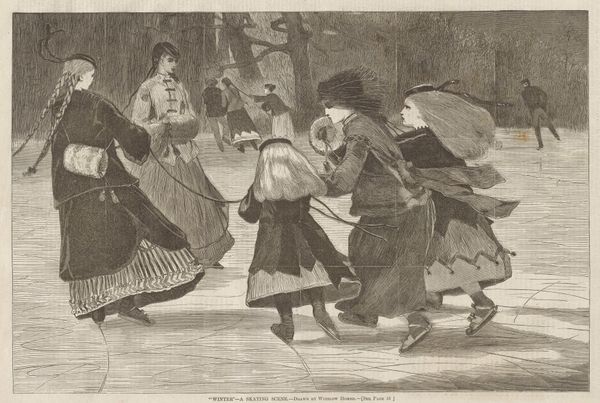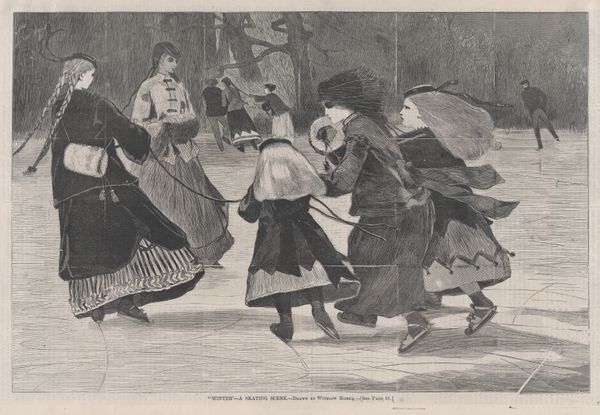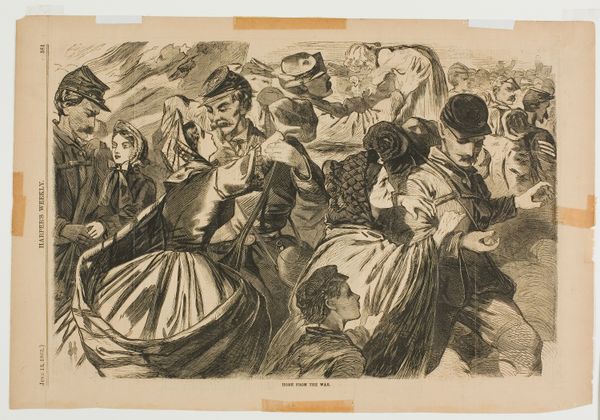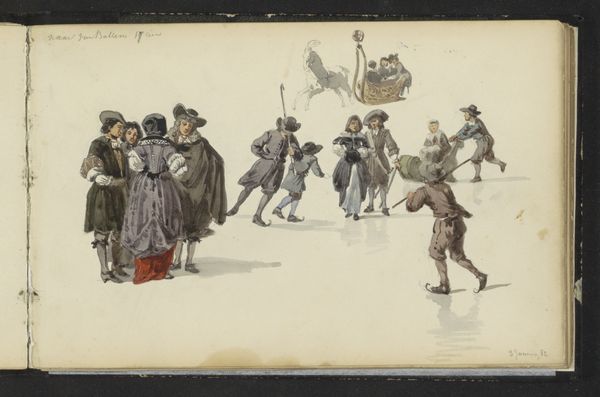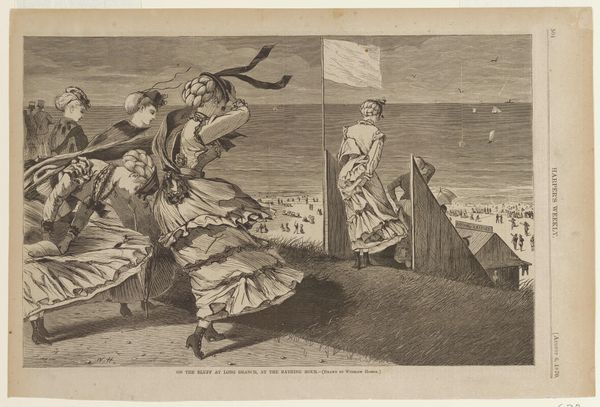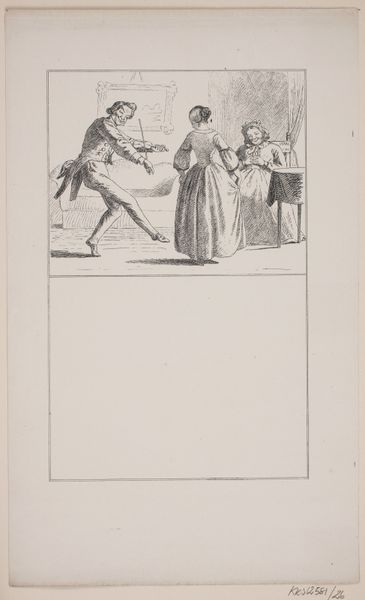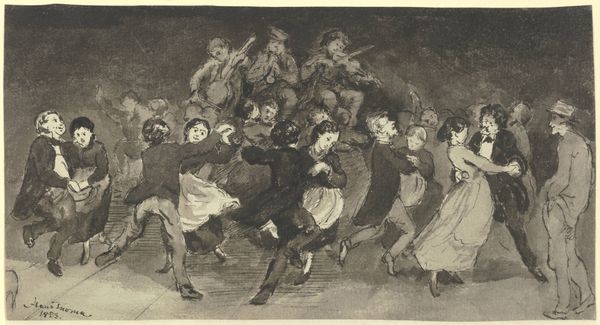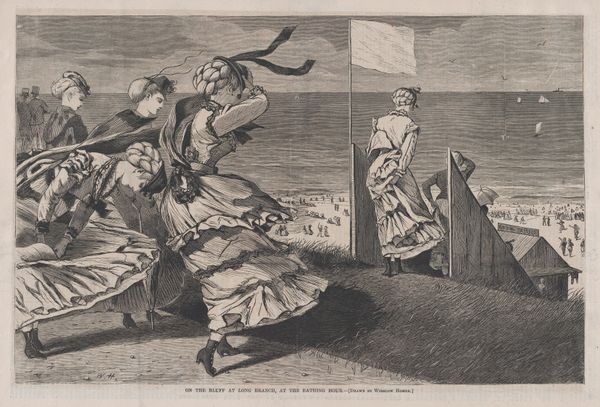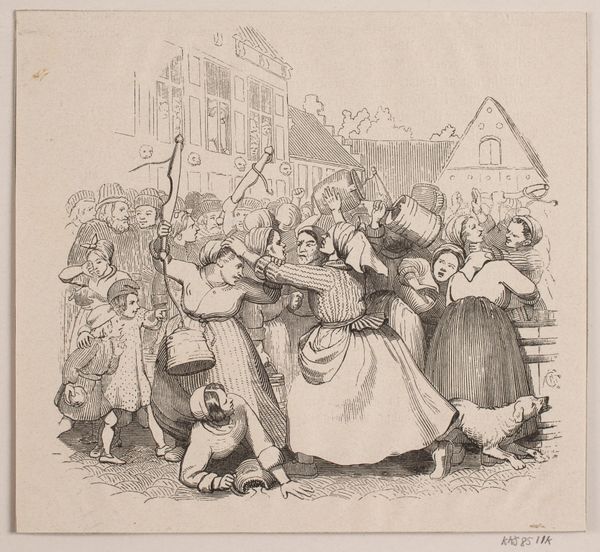
print, woodcut, wood-engraving, engraving
# print
#
landscape
#
figuration
#
woodcut
#
united-states
#
genre-painting
#
wood-engraving
#
engraving
Dimensions: 9 x 13 5/8 in. (22.86 x 34.61 cm) (image)11 1/8 x 16 1/8 in. (28.26 x 40.96 cm) (sheet)
Copyright: Public Domain
Curator: Ah, there’s a brisk, windswept energy to this, don’t you think? Almost like you can hear the shrieks of laughter carried on a cold gust. Editor: I agree, there’s an undeniable vivacity in Homer’s wood engraving, created in 1868. Titled "-Winter-\u2014A Skating Scene", it captures a moment of leisure amid the Victorian era's strict social conventions. Curator: Victorian leisure! What a fascinating paradox. Though seeing those girls linked by rope… is it purely for games, or something else entirely? It makes me think about freedom, constraint, the precarious balance between the two on that icy surface. Editor: Precisely. The rope, in my view, represents a broader social choreography, mapping class and gender dynamics of the period. It subtly directs our attention to questions of agency and who has the ability to move freely—literally and metaphorically. Curator: True, true. It’s such a beautifully executed print; you almost forget it’s a woodcut. Look at those incredible details in the clothing, and the sense of depth created just through lines. I find it really amazing how the figures become more simplistic as you look in the background. Editor: These formal techniques contribute to a sense of immediacy, yes, but I am drawn to the underlying themes. How does the romanticism of the winter scene perhaps conceal the realities of social stratification prevalent during that era? Are we simply admiring a picturesque scene, or is there something more complex at play? Curator: It's funny, isn't it? We view this fleeting moment of gaiety removed from the harsh realities of its time and still interpret these scenes differently. And maybe Winslow Homer himself intended that duality? After all, artists don't always solve the puzzles, they propose them. Editor: Exactly. Ultimately, this seemingly simple image reveals layers upon layers of possible interpretations, and invites us to continually question and re-evaluate our own relationship to both history and representation.
Comments
No comments
Be the first to comment and join the conversation on the ultimate creative platform.
